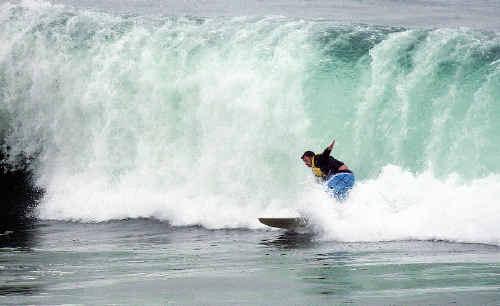Erosion zones identified
HUGE swathes of some of Tweed's most expensive beachfront land sit inside an erosion hazard zone which is expected to be adopted by Council tomorrow.

Tweed Heads
Don't miss out on the headlines from Tweed Heads. Followed categories will be added to My News.
HUGE swathes of some of Tweed’s most expensive beachfront land sit inside an erosion hazard zone which is expected to be adopted by Tweed Shire Council tomorrow.
Two erosion hazard zones identify those properties at risk in 40 years time, and those at risk by 2100 and are set to affect future development of many areas.
Tweed Mayor Warren Polglase said the new hazard lines would impinge on any redevelopment plans that many existing landowners close to the beach might have, including installing swimming pools.
Many of the most-affected blocks are at Fingal, where ocean-front property prices can pass the million-dollar mark.
“It limits any redevelopment with what they want to do with their block,” said Cr Polglase.
“They will be required to address certain setback requirements.”
However Cr Polglase said he did not believe the new rules would affect any major new developments along the Tweed Coast.
That is simply because areas such as at Fingal, Salt and Casuarina Beach had now been developed.
Council officers however have warned in their report to councillors that any development application lodged after tomorrow’s council meeting should be subject to the new rules.
Cr Polglase said the coastal erosion hazard lines had been redrawn as part of State Government requirements, which were partly in response to serious erosion near Byron Bay where millionaire home-owners had fought in court for the right to sandbag their properties.
Aerial photographs produced by council staff overlain with the new erosion hazard lines show Fingal Head particularly affected.
A number of Fingal homes are included within the 2050 hazard line, and even more within the 2100 hazard line.
In many other areas of the Tweed Coast the hazard lines consume most of the beachfront reserves, coming close or onto private property.
Council staff said that in accordance with NSW Government guidelines the new hazard lines were based on a 0.4-metre sea level rise for 2050 and a 0.9-metre rise for 2100, higher than the levels used in the last review of coastal hazards in 2001.
In a report to councillors they said the new hazard lines “are an invaluable risk management tool and will provide direction in future land-use-planning policy decision, with the long-term aim of reducing loss of property and or life owing to predicted coastal erosion processes.”
“Council has a duty of care to ensure that the new information is taken into account in the assessment of any development application on affected land,” they added.
Originally published as Erosion zones identified


